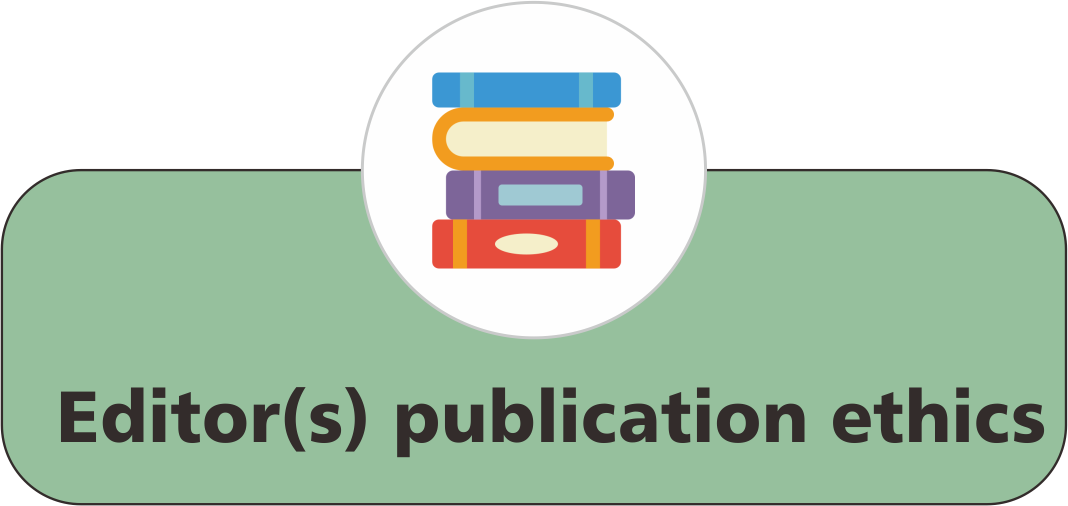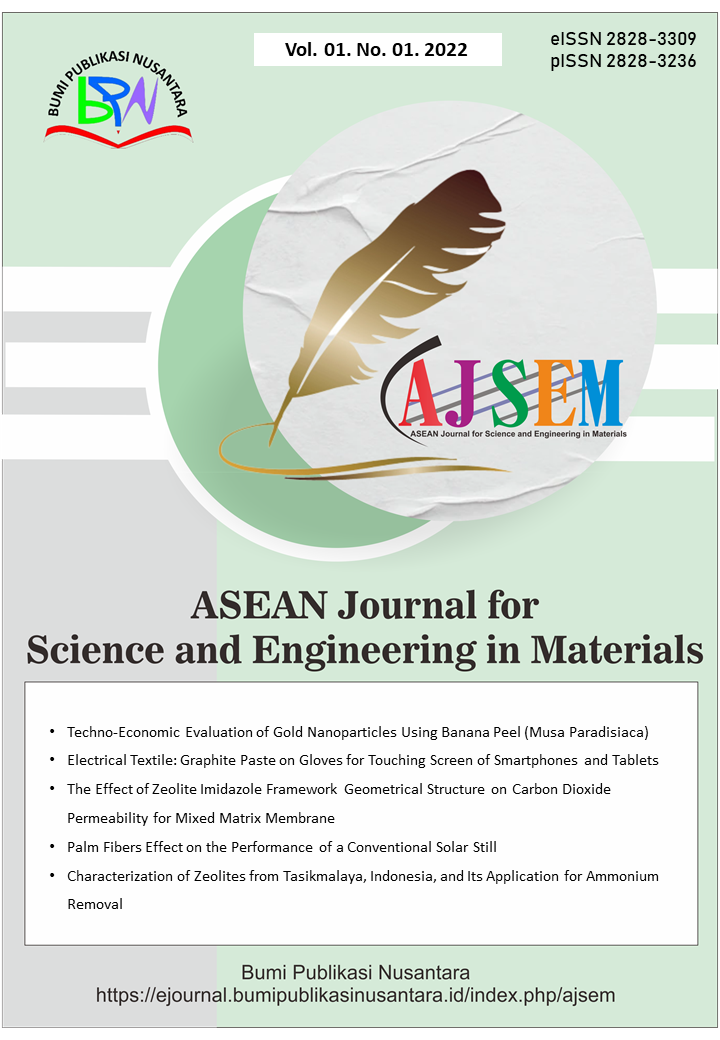Techno-Economic Analysis of Sawdust-Based Trash Cans and Their Contribution to Indonesia’s Green Tourism Policy and the Sustainable Development Goals (SDGs)
 ), Cecep Waahyudin(2), Faisal Tri Ramdani(3), Abraham Yazdi Martin(4), Dede Syahrudin(5), Denny Hernawan(6), Euis Salbiah(7),
), Cecep Waahyudin(2), Faisal Tri Ramdani(3), Abraham Yazdi Martin(4), Dede Syahrudin(5), Denny Hernawan(6), Euis Salbiah(7),
(1) Universitas Djuanda
(2) Universitas Djuanda
(3) Universitas Djuanda
(4) Universitas Djuanda
(5) Universitas Djuanda
(6) Universitas Djuanda
(7) Universitas Djuanda
 Corresponding Author
Corresponding Author
Abstract
This study investigated the techno-economic feasibility of producing trash cans from sawdust waste to support sustainable waste management and smart tourism infrastructure in Indonesia. With the growing volume of tourist-generated waste and increasing demand for eco-friendly public facilities, this innovation offers a low-cost, circular economy solution. A 20-year financial projection was conducted using indicators such as Net Present Value (NPV), Gross Profit Margin (GPM), Payback Period (PBP), and Return on Investment (ROI). Results indicate strong economic viability, with an initial investment of USD 19,500 and a payback period of just over two years. The model contributes to SDG 11 (Sustainable Cities and Communities) and SDG 12 (Responsible Consumption and Production), and aligns with national policy frameworks such as RIPPARNAS, RPJMN, and Ministerial Regulation No. P.75/MENLHK/2019. This study presents a scalable solution for local governments and tourism authorities to enhance environmental infrastructure while promoting sustainability and community-driven innovation in tourism destinations.
This study investigated the techno-economic feasibility of producing trash cans from sawdust waste to support sustainable waste management and smart tourism infrastructure in Indonesia. With the growing volume of tourist-generated waste and increasing demand for eco-friendly public facilities, this innovation offers a low-cost, circular economy solution. A 20-year financial projection was conducted using indicators such as Net Present Value (NPV), Gross Profit Margin (GPM), Payback Period (PBP), and Return on Investment (ROI). Results indicate strong economic viability, with an initial investment of USD 19,500 and a payback period of just over two years. The model contributes to SDG 11 (Sustainable Cities and Communities) and SDG 12 (Responsible Consumption and Production), and aligns with national policy frameworks such as RIPPARNAS, RPJMN, and Ministerial Regulation No. P.75/MENLHK/2019. This study presents a scalable solution for local governments and tourism authorities to enhance environmental infrastructure while promoting sustainability and community-driven innovation in tourism destinations.
© 2026 Bumi Publikasi Nusantara
Keywords
References
Akhator, P. Obanor, A., and Ugege, A. (2017). Nigerian wood waste: A potential resource for economic development. Journal of Applied Sciences and Environmental Management, 21(2), 246-251.
Ali, L., Ahmed Baloch, K., Palamanit, A., Raza, S.A., Laohaprapanon, S., and Techato, K. (2021). Physicochemical characterisation and the prospects of biofuel production from rubberwood sawdust and sewage sludge. Sustainability, 13(11), 5942.
Anggraeni, S., Girsang, G.C.S., Nandiyanto, A.B.D., and Bilad, M.R. (2021). Effects of particle size and composition of sawdust/carbon from rice husk on the briquette performance. Journal of Engineering, Science and Technology, 16(3), 2298-2311.
Awalussillmi, I., Febriyana, K.R., Padilah, N., and Saadah, N.A. (2023). Efforts to improve sustainable development goals (SDGs) through education on diversification of food using infographic: Animal and vegetable protein. ASEAN Journal of Agricultural and Food Engineering, 2(2), 113-120.
Basnur, J., Putra, M.F.F., Jayusman, S.V.A., and Zulhilmi, Z. (2024). Sustainable packaging: Bioplastics as a low-carbon future step for the sustainable development goals (SDGs). ASEAN Journal for Science and Engineering in Materials, 3(1), 51-58.
Ben-Daya, M., and Makhdoum, M. (1998). Integrated production and quality model under various preventive maintenance policies. Journal of the Operational Research Society, 49(8), 840-853.
Butt, J. (2020). A strategic roadmap for the manufacturing industry to implement Industry 4.0. Designs, 4(2), 11.
Clauser, N.M., Gutiérrez, S., Area M.C., Felissia, F.E., and Vallejos, M.E. (2018) Techno-economic assessment of carboxylic acids, furfural, and pellet production in a pine sawdust biorefinery. Biofuels Bioprod Biorefining, 12(6), 997-1012.
Cumo, F., Garcia, D.A., and Gugliermetti, F. (2013). Assessing the potential use of solar energy sources in urban areas located in natural protected sites. Natural Resources, 4(1A), 111-115.
Daud, K.D., and Laguindab, R.S. (2025). Assessment of the potential in halal tourism in the Philippines: The case of the Islamic city in Marawi, Lanao Del Sur, the Philippines. ASEAN Journal of Religion, Education, and Society, 4(1), 1-22.
Djirong, A., Jayadi, K., Abduh, A., Mutolib, A., Mustofa, R.F., and Rahmat, A. (2024). Assessment of student awareness and application of eco-friendly curriculum and technologies in Indonesian higher education for supporting sustainable development goals (SDGs): A case study on environmental challenges. Indonesian Journal of Science and Technology, 9(3), 657-678.
Elia, S.H., Maharani, B.S., Yustia, I., Girsang, G.C.S., Nandiyanto, A.B.D., and Kurniawan, T. (2023). Techno-economic evaluation of hyaluronic acid production through extraction method using yellowfin tuna eyeball. ASEAN Journal of Science and Engineering, 3(1), 1-10.
El-Nadoury, W. (2021). Production of sustainable concrete using sawdust. Magazine of Civil Engineering, 105(5), 10507-10507.
Ferronato, N., and Torretta, V. (2019). Waste mismanagement in developing countries: A review of global issues. International Journal of Environmental Research and Public Health, 16(6), 1060.
Fiandini, M., and Nandiyanto, A.B.D. (2024). How to calculate economic evaluation in industrial chemical plant design: A case study of gold mining using amalgamation method. ASEAN Journal for Science and Engineering in Materials, 3(2), 75-104.
Fullerton, D., and Kinnaman, T. C. (1995). Garbage, recycling, and illicit burning or dumping. Journal of Environmental Economics and Management, 29(1), 78-91.
Gemil, K.W., Na’ila, D.S., Ardila, N.Z., and Sarahah, Z.U. (2024). The relationship of vocational education skills in agribusiness processing agricultural products in achieving sustainable development goals (SDGs). ASEAN Journal of Science and Engineering Education, 4(2), 181-192.
Glushchenko, V.V. (2023). The mechanism of integration of museum and tourism business in the conditions of recovery from the global crisis. ASEAN Journal of Economic and Economic Education, 2(2), 89-104.
Goodger, E. M. (1995). Jet fuels development and alternatives. Journal of Aerospace Engineering, 209(2), 147-156.
Gretzel, U., and Koo, C. (2021). Smart tourism cities: A duality of place where technology supports the convergence of touristic and residential experiences. Asia Pacific Journal of Tourism Research, 26(4), 352-364.
Haq, M.R.I., Nurhaliza, D.V., Rahmat, L.N., and Ruchiat, R.N.A. (2024). The influence of environmentally friendly packaging on consumer interest in implementing zero waste in the food industry to meet sustainable development goals (SDGs) needs. ASEAN Journal of Economic and Economic Education, 3(2), 111-116.
Haryanto, A., Hidayat, W., Hasanudin, U, Iryani, D.A., Kim, S., Lee, S., and Yoo, J. (2021). Valorization of Indonesian wood wastes through pyrolysis: A review. Energies, 14(5), 1407.
Hibatullah, F.M., and Paksi, A.K. (2025). Contribution of cooperation between Indonesia and Singapore in the tourism sector to the domestic economy. ASEAN Journal of Economic and Economic Education, 4(1), 9-24.
Hidayah, F., Muslihah, F., Nuraida, I., Winda, R., Vania, V., Rusdiana, D., and Suwandi, T. (2021). Steam power plant powered by wood sawdust waste: A prototype of energy crisis solution. Indonesian Journal of Teaching in Science, 1(1), 39-46.
Keisyafa, A., Sunarya, D.N., Aghniya, S.M., and Maula, S.P. (2024). Analysis of student’s awareness of sustainable diet in reducing carbon footprint to support sustainable development goals (SDGs) 2030. ASEAN Journal of Agricultural and Food Engineering, 3(1), 67-74.
Kerans, G., Sanjaya, Y., Liliasari, L., Pamungkas, J., and Ate, G., Y. (2024). Effect of substrate and water on cultivation of Sumba seaworm (nyale) and experimental practicum design for improving critical and creative thinking skills of prospective science teacher in biology and supporting sustainable development goals (SDGs). ASEAN Journal of Science and Engineering, 4(3), 383-404.
Krishnan, A., Al-Obaidi, A.S.M., and Hao, L.C. (2024). Towards sustainable wind energy: A systematic review of airfoil and blade technologies over the past 25 years for supporting sustainable development goals (SDGs). Indonesian Journal of Science and Technology, 9(3), 623-656.
Lestari, D.A., Suwarma, I.R., and Suhendi, E. (2024). Feasibility analysis of the development of STEM-based physics e-book with self-regulated learning on global warming topics. Indonesian Journal of Teaching in Science, 4(1), 1-10.
Makinde, S.O., Ajani, Y.A., and Abdulrahman, M.R. (2024). Smart learning as transformative impact of technology: A paradigm for accomplishing sustainable development goals (SDGs) in education. Indonesian Journal of Educational Research and Technology, 4(3), 213-224.
Maratussolihah, P., Rahmadianti, S., Tyas, K.P., Girsang, G.C.S., Nandiyanto, A.B.D., and Bilad, M.R. (2022). Techno-economic evaluation of gold nanoparticles using banana peel (Musa Paradisiaca). ASEAN Journal for Science and Engineering in Materials, 1(1), 1-12.
Maulana, I., Asran, M.A., and Ash-Habi, R.M. (2023). Implementation of sustainable development goals (SDGs) no. 12: Responsible production and consumption by optimizing lemon commodities and community empowerment to reduce household waste. ASEAN Journal of Community Service and Education, 2(2), 141-146.
Mehraliyev, F., Choi, Y., and Köseoglu, M.A. (2019). Progress on smart tourism research. Journal of Hospitality and Tourism Technology, 10(4), 522-538.
Mignard, D. (2014). Correlating the chemical engineering plant cost index with macroeconomic indicators. Chemical Engineering Research and Design, 92(2), 285-294.
Nandiyanto, A. B. D. (2018). Cost analysis and economic evaluation for the fabrication of activated carbon and silica particles from rice straw waste. Journal of Engineering Science and Technology, 13(6), 1523-1539.
Nandiyanto, A.B.D. (2018). Cost analysis and economic evaluation for the fabrication of activated carbon and silica particles from rice straw waste. Journal of Engineering, Science and Technology, 13(6), 1523-1539.
Nandiyanto, A.B.D., Ragadhita, R., Fiandini, M., Al Husaeni, D.F., Al Husaeni, D.N., and Fadhillah, F. (2022). Domestic waste (eggshells and banana peels particles) as sustainable and renewable resources for improving resin-based brakepad performance: Bibliometric literature review, techno-economic analysis, dual-sized reinforcing experiments, to comparison with commercial product. Communications in Science and Technology, 7(1), 50-61.
Nurdiana, A., Astuti, L., Dewi, R.P., Ragadhita, R., Nandiyanto, A.B.D., and Kurniawan, T. (2022). Techno-economic analysis on the production of zinc sulfide nanoparticles by microwave irradiation method. ASEAN Journal of Science and Engineering, 2(2), 143-156.
Nurjamil, A.M., Wolio, N.A., Laila, R.N., Rohmah, S.A., Nandiyanto, A.B.D., Anggraeni, S., and Kurniawan, T. (2021). Eco-friendly batteries from rice husks and wood grain. ASEAN Journal of Science and Engineering, 1(1), 45-48.
Nurnabila, A.T., Basnur, J., Rismayani, R., Ramadhani, S., and Zulhilmi, Z. (2023). Analysis of the application of mediterranean diet patterns on sustainability to support the achievement of sustainable development goals (SDGs): Zero hunger, good health and well beings, responsible consumption, and production. ASEAN Journal of Agricultural and Food Engineering, 2(2), 105-112.
Nurramadhani, A., Riandi, R., Permanasari, A., and Suwarma, I.R. (2024). Low-carbon food consumption for solving climate change mitigation: Literature review with bibliometric and simple calculation application for cultivating sustainability consciousness in facing sustainable development goals (SDGs). Indonesian Journal of Science and Technology, 9(2), 261-286.
Nwankwo, F.C., Okwori, R.O., Mohammed, B.M., and Igwe, C. O. (2023). Assessment of wood waste management practices in small and medium scale enterprises in Minna, Niger State. Journal of Resources Development and Management, 90 (1), 87-97.
Olaiya, B. C., Lawan, M.M., and Olonade, K.A. (2023). Utilization of sawdust composites in construction—a review. SN Applied Sciences, 5(5), 140.
Owebor, K., Otuagoma, S.O., Eyenubo, O.J., Uranta, A.G., Ukrakpor, F.E., Ezewu, K., and Ebisine, E.E. (2023). Technical analysis of sawdust-to-power: A paradigm shift in waste management in a typical developing economy. Journal of Energy and Power Technology, 5(4), 1-18.
Petchwattana, N., Naknaen, P., and Narupai, B. (2020). A circular economy use of waste wood sawdust for wood plastic composite production: Effect of bio-plasticiser on the toughness. International Journal of Sustainable Engineering, 13(5), 398-410.
Pierucci, S. (2022). Importance of recycling and waste. Advances in Recycling and Waste Management, 7(3), 216.
Pramanik, P.D., and Rahmanita, M. (2023). Strengthening the role of local community in developing countries through community-based tourism from education perspective: Bibliometric analysis. Indonesian Journal of Multidiciplinary Research, 3(2), 331-348.
Rachmadhani, D.R., and Priyono, B. (2024). Techno-economic analysis of the business potential of recycling lithium-ion batteries using hydrometallurgical methods. ASEAN Journal for Science and Engineering in Materials, 3(2), 117-132.
Ragahita, R., and Nandiyanto, A.B.D. (2022). Computational bibliometric analysis on publication of techno-economic education. Indonesian Journal of Multidiciplinary Research, 2(1), 213-220.
Rahmah, F.A., Nurlaela, N., Anugrah, R., and Putri, Y.A.R. (2024). Safe food treatment technology: The key to realizing the sustainable development goals (SDGs) zero hunger and optimal health. ASEAN Journal of Agricultural and Food Engineering, 3(1), 57-66.
Rahmat, A., Zahrani, A., Hidayat, H., Arum, F., Respati, S.A., Susanti, W.D., Hariadi, H., Mutolib, A. (2025). Characteristics of jengkol peel (pithecellobium jiringa) biochar produced at various pyrolysis temperatures for enhanced agricultural waste management and supporting sustainable development goals (SDGs). ASEAN Journal of Science and Engineering, 5(1), 145-172.
Rodionov, M., and Nakata, T. (2011). Design of an optimal waste utilization system: A case study in St. Petersburg, Russia. Sustainability, 3(9), 1486-1509.
Romato, S.H.H.A., and Daud, K.D. (2024). Halal tourism as a vehicle for community service and development: A case study of Butig, Lanao del Sur, Philippines. ASEAN Journal of Community Service and Education, 3(2), 147-162.
Subagyono, R.D.J., Qi, Y., Chaffee, A.L., Amirta, R., and Marshall, M. (2021). Pyrolysis-GC/MS analysis of fast-growing wood macaranga species. Indonesian Journal of Science and Technology, 6(1), 141-158.
Wangsupphaphol, A., Phichaisawat, S., and Lengkayan, R. (2024). Alternative energy options for a thai durian farm: Feasibility study and experiments for the combination of solar photovoltaics and repurposed lithium-ion batteries. Indonesian Journal of Science and Technology, 9(1), 125-144.
Warlina, L., and Damayanty, L.E.D. (2021). The expansion and spatial pattern of shopping and tourism services facilities in North Bandung Region, Indonesia. Indonesian Journal of Science and Technology, 6(2), 385-400.
Yulius, K.G., and Rahmanita, M. (2025). The future of sustainable tourism research in Pekalongan municipality: A scoping review and its education perspective. Indonesian Journal of Multidiciplinary Research, 5(1), 69-84.
Article Metrics
Abstract View : 386 times
: 386 times Download : 189 times
PDF
Download : 189 times
PDF  Download : 86 times
Download : 86 times
Refbacks
- There are currently no refbacks.
Copyright (c) 2025 Bumi Publikasi Nusantara

This work is licensed under a Creative Commons Attribution-ShareAlike 4.0 International License.









